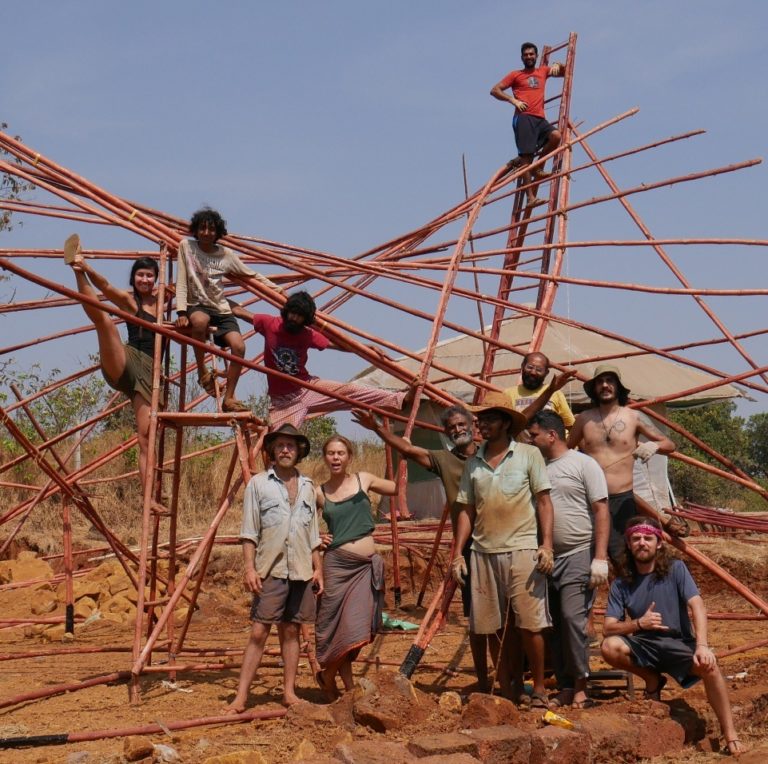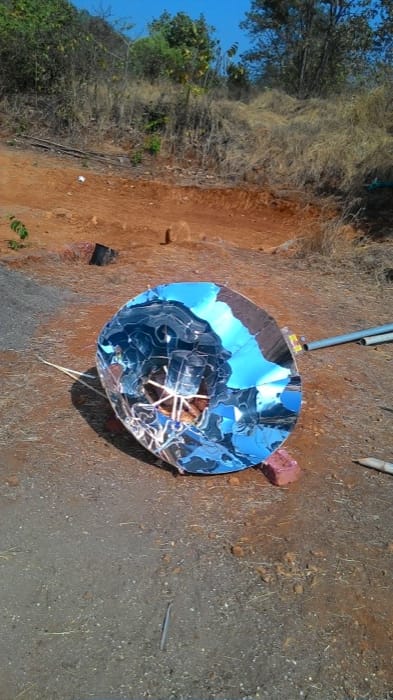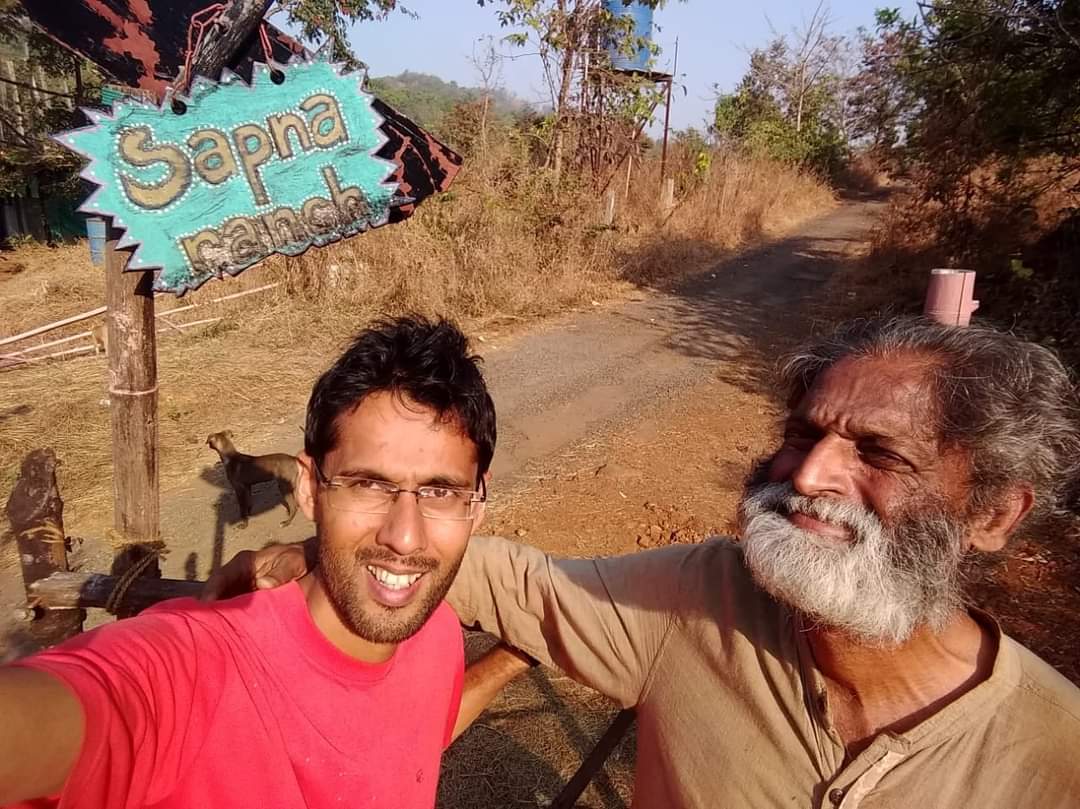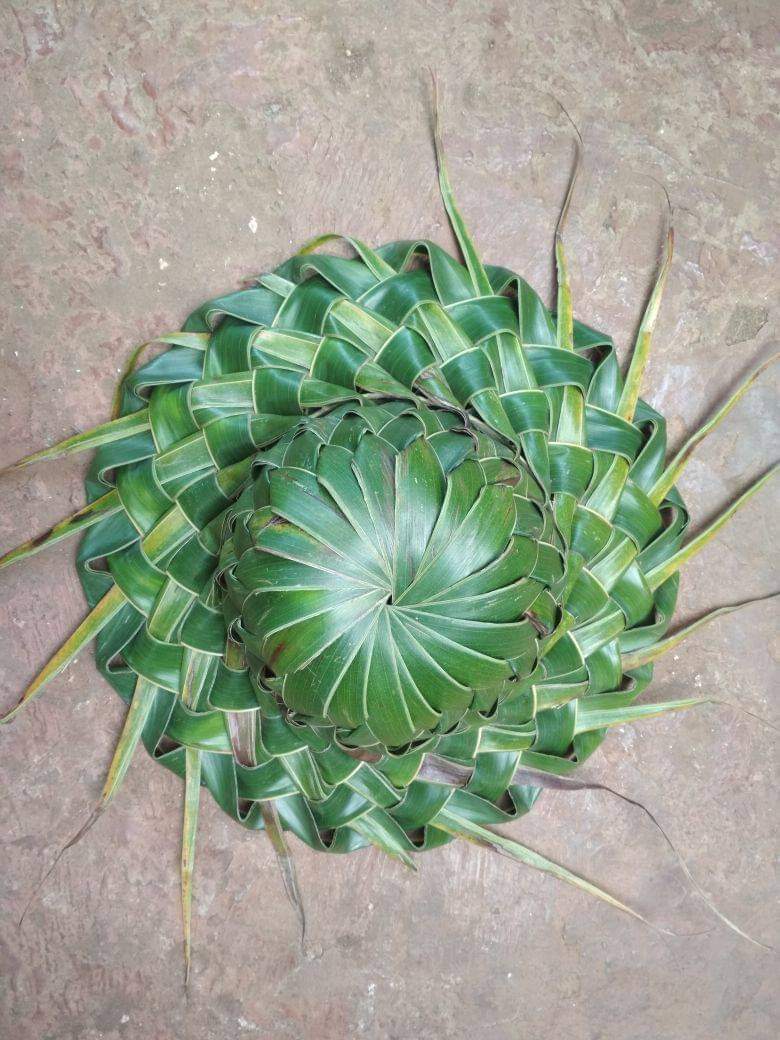Lab in Nature’s lap
At Sapna Ranch in Maharashtra, visitors and students learn through activities and happily share their knowledge. A minimalistic, eco-sustainable living focussed on learning is the motto here.
The joy of making stuff is unparalleled. Be it a cake or a kaleidoscope, the ‘summit feel’ is heady. Sadly, for the new generation, the ‘doing’ has been taken away and hands know only how to hold the phone, and that is no exaggeration.
Education has been about accumulating facts and information, and then doing research. Turning it on its head, and doing research to then learn facts, is what some people like Hasmukh Sapnawala are attempting. He is a scientist turned educator who has set up a few acres of land as a natural lab where anyone interested to learn can visit and stay awhile.
A dusty landscape with patches of green and strange-shaped domes peppering the area, some youth busy tendering to the crops, while few others are tinkering with bamboo logs or discussing under the wind turbine, dogs and cats lazing in shaded corners, tomatoes roasting in the sun dryer, clothes put out to dry fluttering in the breeze, and a man sporting a hat completes the picture of Sapna Ranch.

Volunteers working on the hypar structure that uses bamboo frame, one of its kind
‘Learning by doing’ is the mantra at the ranch in Ratnagiri’s Mandangad. This could be about making a meal, building a house or a compost toilet, fixing a leaking tap or setting up a passive cooling system that borrows on the earth’s stable underground temperature.
Hands-on learning
“I have learnt everything in my life by doing research, whether it is quantum mechanics or biomimicry or neuroplasticity. It is only such learning that remains with us,” says the expert on emerging technology, who has worked on the world’s first Internet Bank, Java smart card, RFId and so on, and realised even then that none of these technologies would be taught for a decade at least. Hasmukh has lived abroad for two decades.
He encourages creative problem solving that often involves the student making mistakes and improvising on the designs and models they build. The ranch is a proof-of-concept space where new and emerging technologies can be tried out and then people can take it forward across the globe. “Nothing here is built to last as I do not want to waste time and effort on maintenance. It is all about learning,” says Hasmukh, noting also that the place, as a result, may not be the tidiest of places! A lab is not exactly a neat space after all.
Tellingly, there are no clocks, mirrors or ‘servants’ at Sapna Ranch. Pace of life is unhurried and as dictated by each individual. All work is done by the community, living and sharing the space. This includes cooking, washing, cleaning, farming, etc.
It is a minimalistic way of life, which Hasmukh believes will have to be adopted by humanity sooner than later. He affirms that he was born to serve and that is what he is doing at the ranch in providing a space for holistic learning. Not only livelihood skills, children living at the ranch for any period, will pick up moral values and learn to handle emotions.

Parabolic solar cooker, among the many projects built by volunteers and students
An example he proudly speaks of is teenager Prasad from Goregaon who stayed at the ranch and went on to pass the challenging entrance examination at the National Institute of Design. In fact, Prasad confessed that it was his stay at Sapna Ranch that had helped him clear the exam and come out with a top ranking.
His stay taught him the courage and grit needed while dousing a forest fire, as also patience and empathy and a more effective way of teaching, Prasad mentioned in a blog. Learning from mistakes and not being discouraged, the freedom to explore and learn that the ranch allowed him were some of his takeaways, apart from some products he designed and built and hard skills he learnt.
Community learning
The interest the ranch provoked saw visitors wanting to stay and learn and slowly the place became a community project. The long-term plan is to have a community of around 800 people spread across 500 acres of land that will be slowly acquired and shared with the community. Around 40 families, disillusioned with the rat race and wanting to live a stree free eco-sustainable life, are already part of Sapna Ranch. Hasmukh has plans for a residential program at the ranch where 6-8 children of varying ages will live as a family in a home/pod with a host parent or couple. Provision for elders as host grandparent will also be provided. In all, there will be around 30 pods with 300 children, 60 host parents, 60 host grandparents and 120 volunteers, living under a roof and sharing stories, values and experience. It will make for diverse learning for the young who lack such exchange of ideas, feels Hasmukh. There will also be 60 trained guides for the learners.

A volunteer student shares a selfie with Hasmukh
Every decision will be based on what he coins as ‘sociocracy’ where every voice is heard and consent from everyone becomes mandatory.
The experience based holistic learning environment (EBHLE) at Sapna Ranch is based on a Play-Learn-Share module which comes from activity-subject-documentation respectively. Located in a forest ecosystem, it is Hasmukh’s hope that the students will learn to nurture nature and maintain the balance in the ecosphere.
The ranch will hopefully be self-sufficient in food, energy and funds, Hasmukh says in ten years. Agri produce and income from trainings will be the main source of revenue. Three categories of learning currently are on offer at the ranch – eco-friendly construction, organic farming and alternate energies.

Clambering up for papayas
Fruits like banana and water melon are grown without relying on pesticides or fertilisers. Instead, the urine from the compost toilets is diverted straight into the banana patch. Five tons of water melon was harvested last year, Hasmukh says, adding that 20 kilos of wild mangoes were harvested every day during season from the land. Drip irrigation for the melon helped save large quantities of water. Manure comes from cowdung and dry leaves.
Water is available at a depth of 30 metres and is pure. Check dams in the land help recharge the groundwater.

The swimming pool at Sapna Ranch
A gathering space structured in the form of a hypar or hyperbolic parabaloid makes use of the geometrical shape to withstand wind loads using very thin roof materials like canvas, and bamboo as frame. This is one of its kind. A geodesic dome, Himalayan rocket stove that makes for efficient smokeless cooking using wood, wind turbine for energy, solar dryer to sun dry vegetables and fruits, are some of the innovative technologies deployed. Students actively participated in the making of each of these, informs Hasmukh. “They work on the ranch, play with our rescued animals and interact with people of various ages. We have had over 300 volunteers from various countries stay with us. Everyone is learning. I like to say that we are learners and guides here, and both are learning.”
Volunteers go away with a feeling of being re-connected not only to the land and the community, but also to oneself.
Concepts galore
Every project brings its multi-faceted learning. In modelling and building a bamboo stool, Prasad had to combine geometry and physics of stability. The solar dryer for instance rests on a stand that was built with geometry and Pythagoras theorem coming in handy, as also concepts of stable equilibrium. The dryer meanwhile has a body of tin painted black to absorb heat (black body physics) and has a narrow gap at the bottom and larger one on the top. The convection causes the hot air to rise and Bernoulli’s principle pushes it from below to above, in the process heating the cut vegetables.
Geography is drawn into the discussion around the solar water heater. Which direction should the pipes face for maximum heating of water, Hasmukh asks a volunteer. East is the most common reply, till prodded. Being in the northern hemisphere, the sun at its hottest at the equator falls to the south of India and that is why most of our heaters on terrace tops face the south.

Upcycled coconut leaf hat made popular by Hasmukh
The geothermal conditioning used at the ranch borrows on the fact that at four metres depth, the earth has a constant temperature of 25 deg C. By sending air from the outside to travel down and move along 15 metres and sucked up, the ambient hot or cool air is conditioned through a method of heat exchange. The fan used to suck the air needs hardly 40 watts as compared to the 1000 W an AC needs, notes Hasmukh. “In an AC it is the same air that is recycled while in geothermal units it is fresh air.”
Fun time at ranch can be at the cool pool set up with stone walls, or you could spend time stamping hay into clay and lime to apply on the bamboo frame of the wattle and daub structures. All structures are built using locally available materials.
While paper in the campus is recycled, the plastics are integrated into foundation material.
Hasmukh believes that the experience at the ranch will help the young generation to live in a world depleted of natural resources. With the rate of consumption we are witnessing, and the dangers of global warming which are already around us, creative problem solving will be the need of the future years.
(For details you can reach Hasmukh on hasmukh.s2611@gmail.com or on phone +91 9552689001)
Compiled by Jaya
